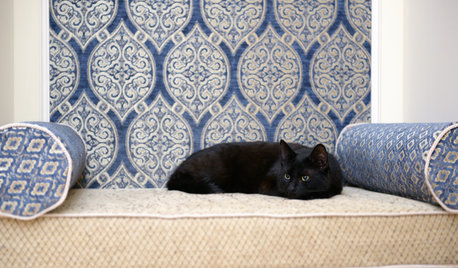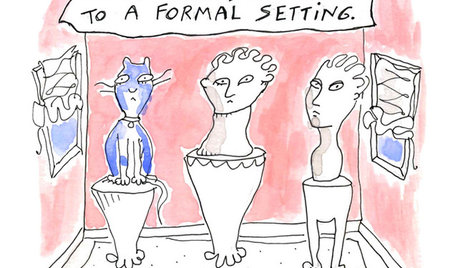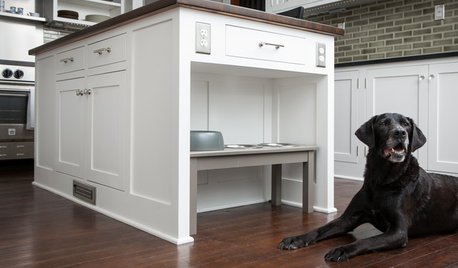Old cat with CRF not eating or drinking
mudhoney
11 years ago
Related Stories

PETS10 Tips for Keeping Indoor Cats Healthy and Happy
It's National Cat Day: Ask not what your cat can do for you (because it will ignore you) but what you can do for your cat
Full Story
PETSHouzz Pets Survey: Who Rules the House — Dogs or Cats?
New data shows that pets make people happy, and pet owners love spending big to return the favor
Full Story
PETSSo You Want to Get a Cat
If you're a cat lover, the joys outweigh any other issue. If you haven't lived with one yet, here are a few things to know
Full Story
PETSHouzz Call: Send in the Design Cats
Post your best photo of your cat at home, in the garden or with you in your studio. It could be published in a featured ideabook
Full Story
MOST POPULAR7 Ways Cats Help You Decorate
Furry felines add to our decor in so many ways. These just scratch the surface
Full Story
HEALTHY HOME12 Ways to Set Up Your Kitchen for Healthy Eating
Making smart food choices is easier when your kitchen is part of your support team
Full Story
EDIBLE GARDENSWhy Grow Quince? For Beauty, Fragrance and Old-Time Flavor
Delightfully perfumed fruit and lovely spring blossoms make this apple and pear cousin worth a spot in the garden
Full Story
PATIOSPatio Details: Good-bye Cracked Concrete, Hello Lush Garden
A San Francisco couple replace an old parking space with a barefoot-friendly outdoor retreat for eating, entertaining and play
Full Story
KITCHEN DESIGNPet-Friendly Design: Making Room for the Dog Dish
In a dog’s life, you eat on the floor. Except in kitchens like these, where pets are factored into the design
Full Story
PETSIncredible Home Catwalks Make for Purr-fectly Happy Felines
Walkways and tunnels custom built to the tune of about $35,000 keep a homeowner’s 18 cats on cloud nine
Full StoryMore Discussions








trancegemini_wa
laurief_gw
Related Professionals
Jacksonville Furniture & Accessories · Portland Furniture & Accessories · Zionsville Furniture & Accessories · Tenafly Cabinets & Cabinetry · Cambridge Flooring Contractors · Chicago Flooring Contractors · Manteca Flooring Contractors · Melbourne Flooring Contractors · New Orleans Flooring Contractors · Oswego Flooring Contractors · Randolph Flooring Contractors · San Jose Flooring Contractors · Shepherdsville Flooring Contractors · Snellville Flooring Contractors · Stockton Flooring ContractorsmudhoneyOriginal Author
mudhoneyOriginal Author
lisa_fla
lisa_fla
mudhoneyOriginal Author
laurief_gw
mudhoneyOriginal Author
lisa_fla
laurief_gw
mudhoneyOriginal Author
laurief_gw
chacha311
laurief_gw
laurief_gw
mudhoneyOriginal Author
laurief_gw
mudhoneyOriginal Author